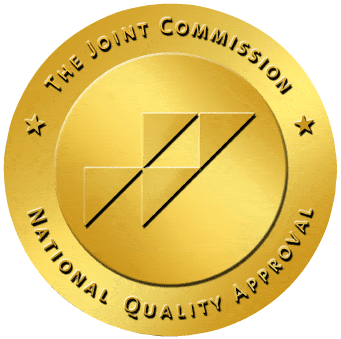Tramadol (Ultram) Addiction Treatment

Tramadol (Ultram) Addiction Treatment
According to the Substance Abuse and Mental Health Services Administration (SAMHSA), the number of ER visits related to tramadol abuse has increased by 250% from 2005 to 2011. Tramadol is another medication in the pool of opioids that treats moderate to severe pain. Although weaker than other prescription and illicit opioids, it can still lead to addiction.
Read on to thoroughly understand the depths of tramadol addiction, its background, how it is abused, and its health risks on human life.
History of Tramadol
The history of tramadol is relatively young compared to other prescription medications. The drug was developed in 1962 by the drug company Grünenthal GmbH that specializes in treating pain. 1 The company was founded in 1946 and has been continuously family-owned. Today, 50% of the company’s revenue is generated by selling pain medications such as tramadol.
Approval and Distribution
After 15 years of testing, the medication was finally approved. It was brought to the foreign market in 1977 under the name Tramal. However, it was not until 1995 that the drug became available in the United States and the United Kingdom.
Prescriptions have increased quickly from 2008 until 2012. During those five years, tramadol prescriptions increased from 23 million in 2008, 28 million in 2010, to more than 37 million in 2012. 2013 saw another increase, with almost 44 million prescriptions in the US alone.
In 2016, with more than 19 million prescriptions, tramadol was the 39th most prescribed medication in the US. 2
Schedule IV Restrictions
In 2014, the Drug Enforcement Administration restricted tramadol. It classified it as a schedule IV drug on the national level. A schedule IV classification means that the medication has:
A medically necessary purpose
Low risk of abuse
Closely monitored and restricted prescriptions and refills. For example, a doctor can only prescribe five refills, patient needs to show a new prescription every six months
A schedule IV classification means more severe punishments for illegal possession, sale, and abuse. If a person is caught possessing the substance, they can be charged with misdemeanor or felony. Some states can even impose a 5-year sentence for having tramadol without a valid prescription.
Other Names
Tramadol is the generic name for the prescription pain reliever. It’s sold under various brand names, including:Ultram
Conzip
Rybix ODT
Ultram ER
Common street names for the drug include:
Trammies
Chill pills
Ultras
According to the DEA, there were 3.2 million people over the age of 12 in the US in 2014 who used tramadol for non-medical reasons in their lifetime. This number is around 10% of the total pain reliever abuse market.
Is Tramadol Life-Threatening?
Once, tramadol was believed to have a low risk of abuse, dependence, and addiction. But statistics from recent years are changing the perception people have of the drug. Here’s why:
The emergency room visits due to non-medical use of tramadol have increased from 645 in 1995, 8,029 in 2007, to 20,000 in 2011.
The number of emergency room visits due to adverse reactions to tramadol has also increased. The number grew from 6,207 visits in 2004, 16,946 in 2007, to 25,884 in 2009.
Treatment facility admissions for tramadol addiction have been rising steadily since 2005. In 2002, only 12 people were admitted to a treatment facility, compared to 159 in 2012.
JAMA Study
Another study published in the Journal of the American Medical Association(JAMA) examined the risk of death among 90,000 people one year after they received their first prescription for tramadol or other pain relievers such as naproxen, diclofenac, or codeine. The participants were at least 50 years of age and suffered from osteoarthritis.
The study found that patients who were prescribed tramadol had a higher risk of death than those who were prescribed an anti-inflammatory drug. The numbers were the following:3
2.2% of the patients in the tramadol group died, compared to 1.3% of the patients in the naproxen group.
3.5% of the patients in the tramadol group died, compared to 1.8% of the patients in the diclofenac group.
2.5% of the patients in the tramadol group died, compared to 1.2% of the patients in the etoricoxib group.
However, due to the study’s design, it can’t be determined whether it was tramadol treatment that caused the higher rates of death.
If compared with other types of controlled substances, tramadol is a safer drug. Heroin is a Schedule I drug that carries a higher abuse potential and no acceptable medical use. OxyContin is a Schedule II drug that has a high risk of abuse but has an accepted medical use.
Increases Risk Of Addiction
Tramadol remains a dangerous drug that carries a risk for addiction if a person uses it:
For an extended period of time
In higher doses than what the doctor recommended
More frequently than what the doctor prescribed
For non-medical purposes
With other substances, such as alcohol, sedatives, or other painkillers
Main Usage
Just like other opioids, tramadol is used to treat chronic pain. Doctors prescribe the drug to people suffering from moderately severe pain, including pain after surgery and chronic conditions like arthritis. Patients can find it under one of its brand names, Ultram.
Treating Chronic Pain
An extended-release version of the drug is sometimes prescribed to patients with ongoing chronic pain. By taking this version of tramadol, patients can experience longer-lasting pain relief without taking the medication as frequently.
Tramadol binds to pain receptors, stopping pain signals. It’s often prescribed due to its less addictive properties than other painkillers. But due to its calming and euphoric effects, patients may develop an addiction to the drug, especially when it’s taken for a long time or when taken in larger doses than prescribed.
Doctors recommend a daily dose of 100-400 mg. The maximum daily dose should not exceed 400 mg. Normal-release forms may be given every 4-6 hours, and the extended-release forms should be given every 12-24 hours.
Past Substance Abuse
In almost 95% of cases, people who abuse the drug have a previous history of other substance abuse. 4 This means that people with an addiction history are more susceptible to developing an addiction.
Side Effects
Tramadol relieves pain by binding to opioid receptors in the brain and spinal cord. When a person takes a higher dose, they might experience a euphoric high that many abusers seek.
When a person takes the drug orally, tramadol converts into another compound. This compound is known as O-desmethyltramadol, which is a much more potent activator of opioid receptors. A person may get high on tramadol, even if it isn’t their intention.
Tramadol can also raise the levels of serotonin and norepinephrine in the brain, acting as an antidepressant drug. This mechanism is thought to be partially responsible for the drug’s ability to reduce depression and obsessive-compulsive symptoms in patients. It might also be one of the causes of why a person might develop an addiction to tramadol.
Short-Term Effects
The most common short-term effects of tramadol include:
Reduced Pain
Tramadol blocks pain signals in the brain, which results in a less intense pain for patients suffering from chronic pain.
Decreased Anxiety
Tramadol can also lead to feelings of relaxation and calm due to the way it changes brain chemistry.
Elated Mood
The drug reduces depression and obsessive-compulsive symptoms in patients. As a result, patients may feel euphoric and happier.
Potential Side Effects
Some possible side effects of tramadol include:
Dizziness
Nausea
Vomiting
Constipation
Loss of appetite
Difficulty concentrating
Fever
Muscle pain
Sweating
Overdose Side Effects
Tramadol is a central nervous system depressant. As such, it can slow down the function of the lungs and heart. In some cases, people who take a larger dose than prescribed can stop breathing and overdose. The most common signs of a tramadol overdose include:
Unconsciousness
Sleepiness
Seizures
Coma
Respiratory distress
Abnormally low blood pressure
Slow heart rate
Sweating
Muscle rigidity and muscle pain
Changes in pupil size
Weakened body
Purple nails and lips
Seizures most commonly happen when a person takes a large dosage. A large dosage is taking more than 400mg per day for an extended time.
Serotonin Syndrome
Serotonin syndrome is another potentially life-threatening side effect of tramadol abuse. Serotonin syndrome occurs when too much serotonin is produced or remains in the brain. It commonly happens when a patient takes tramadol together with antidepressants. Symptoms of serotonin syndrome include:
Agitation
Rigid muscles
Lack of coordination
Coma
Confusion
Tremor
Seizures
In Combination with Other Drugs
Tramadol is often taken in combination with other substances. This is known as polydrug use. People usually combine the drug with other substances to increase their high. Tramadol is commonly mixed with:
Alcohol
Sedatives
Other painkillers
Cold medicine
There are many health risks associated with taking tramadol with other drugs. Combining these drugs can result in respiratory depression. It can also increase the risk of seizure or overdose.
Long-Term Effects
If a person takes tramadol in higher doses for a long time, they may develop long-term side effects. The most common are:
Tolerance to the drug
Since tramadol changes the brain’s chemistry, there’s a risk of developing tolerance. The body gets used to the presence of the drug, so users will need larger doses to experience the same high.
Physical dependence
Extended usage of tramadol may also result in physical dependence. The body gets used to the presence of the drug and requires tramadol to function properly. Stopping the drug may result int he onset of withdrawal symptoms.
Cognitive decline
Many people abusing tramadol may experience cognitive impairment and slow reaction times. They may find it more challenging to perform complex tasks in their daily life.
Withdrawal Symptoms
People with a physical dependence on tramadol will experience withdrawal symptoms if they reduce their dose too quickly or if they stop taking the drug altogether.
The most frequently experienced symptoms of tramadol withdrawal include:
Sweating
Nausea
Anxiety
Depression
Restlessness
Hyperactivity
Gastrointestinal pain
Diarrhea
Hallucinations
Confusion
The withdrawal symptoms usually last anywhere from five to seven days. People who have abused the drug for a long time and have taken higher doses will have more severe symptoms. A recommended method of reducing withdrawal symptoms is medically-supervised detox.
Misconceptions about Tramadol
Myth #1: Tramadol is The Least Potent Opioid And Cannot Result in Addiction
Tramadol is one of the least potent opioid painkillers. However, the belief that it cannot develop physical dependence is wrong. The body of a person who takes the drug in higher doses and for a long time gets used to the presence of the substance. Eventually, it will have a hard time functioning without it.
Myth #2: Tramadol Use Doesn’t Have Any Life-Threatening Side Effects
Tramadol is a central nervous system depressant that can slow down the function of the lungs and heart. People who take a larger dose than prescribed may stop breathing and overdose.
Myth #3: Tramadol is a Prescription Drug, Which Makes it ‘Safe’
Although tramadol is prescribed by a doctor, failing to follow their instructions may lead to dangerous side effects. A person may develop tolerance and dependence on the drug. Doctors prescribe it for a short period of time and in small doses that shouldn’t exceed 400 mg per day.
Treating an Addiction to Tramadol
Intervention
In many cases, a person addicted to tramadol might not realize they have a problem, or they might be in denial about their addiction. An intervention is recommended in order to help the person see it and acknowledge it.
An intervention should be carefully planned and executed. Family and friends may do it in consultation with a doctor or professional. It’s recommended to have a professional interventionist by your site. An interventionist will:
Guide the intervention team through the intervention process
Provide education about the dangers of addiction
Help organize a plan for treatment
When organizing an intervention, timing and location are of great importance. The addict should feel comfortable and not threatened. The intervention team should communicate specific examples of the addict’s destructive behavior and offer a prearranged treatment plan with clear guidelines.
Medically-Supervised Detox
Detox is the first step in a tramadol treatment program. Medically-assisted detox is the safest way to clear the body of toxins. It’s performed under a doctor’s supervision in a professional and high-quality care center.
Depending on the severity of usage, tramadol detox can be mild, moderate, or severe. If the patient can’t tolerate the withdrawal symptoms, they may be given over-the-counter medications or prescribe medications. The most common include:
Metoclorperimide
Loperimide
Ibuprofen
Clonidine
Valium
Buprenorphine
Suboxone
Inpatient Care
Inpatient rehab is ideal for patients struggling with a more severe addiction and co-occurring mental disorders. This type of rehab involves a great deal of care and supervision. Patients live on-site and follow a very structured agenda. It’s also effective for people who don’t live in a supportive home. Inpatient care generally lasts from 28 to 90 days. In case a patient needs to stay for a longer period of time, the rehab center can extend the length of the program. Many residential centers provide a variety of treatment options to their patients, including:Cognitive-behavioral therapy (CBT)
Group therapy
Motivational enhancement therapy (MET)
Holistic therapy
Yoga therapy
12-step programs
Biofeedback therapy
One-on-one counseling
Dialectival behavioral therapy (DBT)
Art therapy
Equine and pet therapy
Support groups
Outpatient Rehab
Outpatient treatment is recommended for people suffering from a mild addiction. During outpatient rehab, people live at home and continue to attend work or school. They attend group and individual therapy sessions each week. They also meet regularly with a psychiatrist. This type of treatment is similar to inpatient rehab. The main difference is that it’s less expensive and less intense.
Outpatient programs vary from one center to another. However, they usually include:
Medication management
Treatment for co-occurring disorders
Individual therapy
Group therapy
Relapse prevention
Aftercare
Inpatient or outpatient care is only one part of recovery. For many people, life after rehab is more challenging. There’s a loss of routine and a reappearance of external influences.
Luckily, many rehab facilities operate their own aftercare programs, which are a type of continued treatment that aims to improve coping skills and prevent further drug abuse.
Examples of aftercare services include:
Sober-living arrangements
Follow-up therapy
Medical evaluations
Alumni support groups
Key Takeaways
Tramadol addiction can be challenging to overcome, but recovery is possible. By choosing the right treatment and having a supportive environment, patients can obtain long-term recovery.
In conclusion, there are a few key takeaways to bear in mind:
Tramadol is a dangerous drug that carries a risk for addiction if a person uses it for a long period of time.
Even though Ultram is the least potent opioid painkiller, it can still lead to tolerance and physical dependence.
Tramadol is a central nervous system depressant. As such, it can slow down the function of the lungs and heart. In some cases, people who take a larger dose than prescribed can stop breathing and overdose.
People who have developed a physical dependence on tramadol will experience withdrawal symptoms. The symptoms can be mild, moderate, or severe, depending on the severity of the addiction.
Detox is the first step in a tramadol treatment program. The second step includes inpatient or outpatient care.
Aftercare programs are a type of continued treatment that aims to improve coping skills and prevent further drug abuse.
This information should not replace a visit to a doctor or treatment center. If you are concerned that you or a loved one might be suffering from a tramadol addiction, ask for professional help today.
Resources
- https://drugabuse.com/tramadol/history-statistics/#targetText=History%20of%20Tramadol,1977%20under%20the%20name%20Tramal
- https://clincalc.com/DrugStats/Top300Drugs.aspx
- https://www.health.harvard.edu/blog/is-tramadol-a-risky-pain-medication-2019061416844
- https://www.who.int/medicines/areas/quality_safety/6_1_Update.pdf














